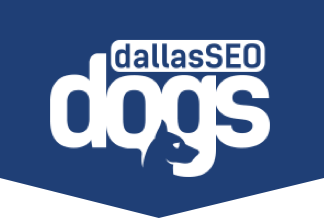Unlocking SEO and SEM: Part One of Our Step-by-Step Guide

Search engine optimization (SEO) and search engine marketing (SEM) are the key pillars that can elevate your online presence and drive business growth. The art of optimizing your website to rank higher in search engine results and strategically leveraging paid search advertising can unlock unlimited opportunities for your brand.
In this two-part series, let’s get into the latest trends, best practices, and step-by-step SEO and SEM strategies to get you world-class results.
What Are SEO and SEM?
SEO and SEM are two key strategies in the realm of digital marketing that focus on improving a website’s visibility and driving targeted traffic from search engines.
Search Engine Optimization
SEO is about optimizing the various elements of a site to improve its organic search engine rankings. “Organic” means non-paid search traffic, unlike other disciplines within SEM.
The goal is to enhance a site’s relevance, authority, and user experience (UX), improving rankings on search engine result pages (SERPs) and increasing organic traffic over time.
Search Engine Marketing
SEM encompasses paid advertising efforts to increase a site’s visibility on SERP. With platforms like Google Ads or Bing Ads, brands bid to display their ads prominently when users search for related terms. SEM gives you immediate visibility and complements SEO efforts.
By crafting compelling ad copy, conducting thorough keyword research, and optimizing campaigns, brands drive targeted traffic to their website and achieve specific marketing goals, like generating leads or increasing sales.
Step 1: Master the Art of Keyword Research
Keywords are the bedrock for both SEO and SEM campaigns. They’re the guiding light that leads search engines and users to your site. Powerful tools like Google Keyword Planner, SEMrush, and Moz can give you the insights to identify your industry’s most relevant and high-performing keywords.
User Intent
In your keyword research, take into account user intent. Put yourself in the shoes of your target and imagine what they’re searching for and the underlying purpose behind their searches:
- Are they seeking information? Can you provide that information from a position of authority, experience, and expertise?
- Are they making a purchase? What phrases would bring someone to the items on your site?
- Need a solution to a problem? What are common ways of expressing this problem and related issues, and how can you guide users to your helpful information?
By aligning keywords with user intent, you can deliver content that precisely meets their needs, leading to higher engagement and conversions.
Search Volume
Aim for keywords that receive significant searches, which indicates a higher demand for your product or topic. However, striking the right balance is crucial.
Highly competitive keywords with massive search volumes will be challenging to rank for, especially in a saturated market.
Meanwhile, low-volume keywords may not drive enough traffic to justify the effort. Finding a sweet spot that aligns with your business goals is the key to success.
Keyword Competition
Tools like SEMrush can provide insight into the organic and paid competition for specific keywords. Analyze the sites and brands ranking well for your target keywords and assess their strengths and weaknesses.
This will help you, in turn, to refine your strategy, identify gaps in the market and uncover opportunities to stand out and differentiate yourself.
Your Target Keywords
Now that you have all this keyword information, compile a targeted keyword list that reflects your business goals. You want a mix of short- and long-tail keywords to balance relevance, search volume, and competition.
Short-tail keywords are broader and more generic, targeting a wider audience, while long-tail keywords are more specific and have less competition. Striking the right balance means you’re getting traffic from both high-intent searches and more niche, long-tail opportunities.
Keyword research is not a one-time task. Monitor industry trends and your keywords’ performance, and adapt your strategy accordingly. Continually refining your keyword list and staying ahead of the curve will ensure your SEO and SEM efforts remain relevant, practical, and optimized for success.
Step 2: Optimize Your On-Page Elements
Optimizing key on-page elements is crucial to elevate your visibility and ensure search engines can easily crawl and index your pages. You can significantly improve your SERP performance by strategically enhancing the major page elements like title tags, meta descriptions, and header tags.
Compelling Title Tags
The title tag is like the headline of a web page. They’re the first thing users see on SERP, and they are vital in capturing their attention.
Incorporate your targeted keywords naturally within the title tag while making it engaging and enticing enough that a user wants to click through. Aim for the correct, concise length (50-60 characters) to ensure it displays correctly as a search result.
Optimized Meta Descriptions
Meta descriptions briefly summarize what users can expect on a particular webpage. They don’t directly impact search rankings but play a crucial role in enticing users to click. A compelling meta description will increase click-through and improve organic traffic.
Craft persuasive and concise meta descriptions (150-160 characters) that accurately represent the page content and relevant keywords.
Use Your Header Tags
Header tags (H1, H2, H3, etc.) help structure your content and make it more readable for search engines and users.
The H1 tag is typically used for the page’s main heading and should contain your primary keyword or a variation of it. Subheadings (H2, H3, etc.) should break up your content into logical sections and include relevant keywords where appropriate.
Header tags improve readability and signal the hierarchical structure and importance of your page’s content, which helps your overall ranking.
Well-Structured and Informative Content
Create well-structured, informative, and valuable content for your target audience. Use paragraphs, bullet points, and subheadings to enhance readability and simplify skimming.
Incorporate your targeted keywords naturally throughout the content while prioritizing UX and providing valuable information that fulfills their search intent.
Improve Navigation
A user-friendly website is crucial for visitors and the search engine crawlers that index your site for search engines in the first place. Ensure your site has a clear and intuitive navigation structure that users and search engines can use to access your content easily.
Internal linking, meanwhile, connects related pages and guides users through your website. Well-organized navigation helps search engines understand your pages’ context and relevance, helping them crawl and index your content more effectively.
Step 3: Create Engaging and Shareable Content
Content is the powerful driving force behind any successful SEO/SEM campaign. It’s the vehicle by which you captivate your target audience, establish your brand’s authority and drive organic traffic and conversions.
What’s E-E-A-T?
High-quality content is the cornerstone of any successful digital marketing strategy. Search engines like Google prefer content that’s well-researched and informative and aligns with the interests and needs of your target. The acronym E-E-A-T best represents Google’s marketing preferences:
- Experience: Demonstrate that a real person has crafted your content using author bios, bylines, and links
- Expertise: Show a level of expertise that makes your content unique
- Authority: Google wants to know that you’re an expert or otherwise notable in your field
- Trustworthiness: Avoid gray-hat SEO practices so you don’t create the illusion that you’re untrustworthy
Be thorough in your industry research, stay on the latest trends, and provide valuable insight and solutions. Addressing your audience’s pain points and delivering meaningful content will establish trust and credibility, setting you up for long-term engagement and conversions.
Be Strategic with Keywords
It’s essential to strike the right balance. Overstuffing your content with keywords means a poor user experience and could result in search engine penalties. Aim for a natural, seamless integration of keywords in your content. It should flow organically and remain reader-friendly.
Values and Needs
While keywords and search are important, your primary focus should always be on providing value and meeting your reader’s needs. Tailor content to their specific pain points, answer their questions, and offer unique solutions.
By putting the reader first, you create content that resonates deeper, establishing a genuine connection and fostering trust. This approach enhances user experience and signals to search engines that your content is relevant and valuable, potentially boosting your rankings.
Shareable Content
Compelling content can go beyond attracting organic traffic, driving brand exposure, and generating valuable backlinks. Your content must stand out from the crowd through engaging storytelling, informative guides, or thought-provoking insights.
Strive to evoke emotions, spark conversations, and give a unique perspective to set your brand apart. When your content resonates with the audience, they’re more likely to share it with others, increasing your reach and your chances of getting backlinks from authoritative websites.
Dallas SEO Dogs: The SEO and SEM Experts
Come back to this blog next week for more on SEM and off-page optimization. By incorporating these strategies into our digital marketing efforts, we can help you establish a robust online presence, attract targeted traffic to your website and ultimately drive business growth.
Embrace the power of SEO and SEM today and watch your traffic soar to new heights. Contact Dallas SEO Dogs for a personalized consultation and start unlocking your brand’s potential with SEO and SEM.
